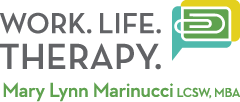Some say that the only constant is change.
It’s something clients and I encounter every day in my practice: we work towards the changes clients want to see in their lives, at work and at home – new habits, better circumstances, easier to tolerate feelings, more realistic thoughts and attitudes. In group work, participants with shared interests – exploring whether they should change careers, for example – consider and apply the principles and practices I teach to their own situations, inside and outside the office.
Professionals generally come to see me after they’ve diligently tried to change but their efforts haven’t produced the results they wish for. Often, they are not sure why. They’ve likely expended effort and time and often money on trying to make change happen and are dispirited that their efforts haven’t worked or worked enough.
I help them slow down and discover what’s been missing. I help them learn what it really takes to change. It’s a 3 stage process:
- Acknowledge
- Understand
- Modify
The problem is, we often leapfrog over understanding: we go from acknowledging (a problem, a need, a wish) right into modifying (what we do, how we think, what we say). Whether out of a desire for immediate gratification or the appeal of quick fixes or just plain not knowing any better, we leapfrog over the stage of understanding, and that’s what holds us back.
There’s a world to discover when we turn our attention to understanding.
I’ll give you an example – a man I work with was talking recently about how he’d feel more confident making the bold moves in his professional life we’d been exploring if he had a bigger cushion of emergency savings.
He described advice he’d recently read on a blog – something like “save big bucks by making everyday changes.” After reading that post he decided to discontinue a ritual he’d been engaging in every day for the past year or so when he, like most of us, moved to working from home. He’d begun taking a break from work every afternoon to buy a coffee from the shop around the corner from his home. Since his ritual cost a few bucks each day, he figured so he could save a tidy sum by dropping this habit. He tried – he made coffee at home. He went cold turkey, muscling through the half hour when he’d normally take his coffee break. He walked around the block instead. Despite his best efforts, he hadn’t yet been successful in cutting out his coffee shop habit and his savings account hadn’t grown.
So I helped him talk about what he liked about the ritual. It got him out of the house, sometimes for the first or only time of the day. It gave him something to look forward to – a break from his monotonous, uninteresting work, a treat (coffee is his favorite). It enabled him to interact with the outside world – nature, the weather and, importantly, other people. These are things he was craving and were necessities for his overall wellbeing. He hadn’t understood that they were a significant part of his habit. He went right from acknowledging his ritual to modifying his behavior and his efforts fell short.
Consider this:
It’s believed that when a problem persists, there’s more to understand. This is true for seemingly small concerns like developing a new daily habit or bigger undertakings like starting to advocate more for yourself at work, putting imposter syndrome, procrastination or perfectionism in its place, or considering whether to pursue a new job or career.
Asking only “what do you want to stop doing” and “what do you want to start doing instead” ignores the middle ground of understanding. It’s when we understand that real change is possible.
I like to help clients make change that sticks. If you’d like to explore how we may work together, please contact me. I’m here to help.

Recent Posts
Work Life Balance
My best advice? Ditch the cliche and let me help you get back to the fundamentals.
Who Are You At Work?
Taking a deeper look at your professional identity will change your perspective. And your outcome.
Coping Through Chaos
Where to start and what to do so you can cope effectively when chaos comes home.



